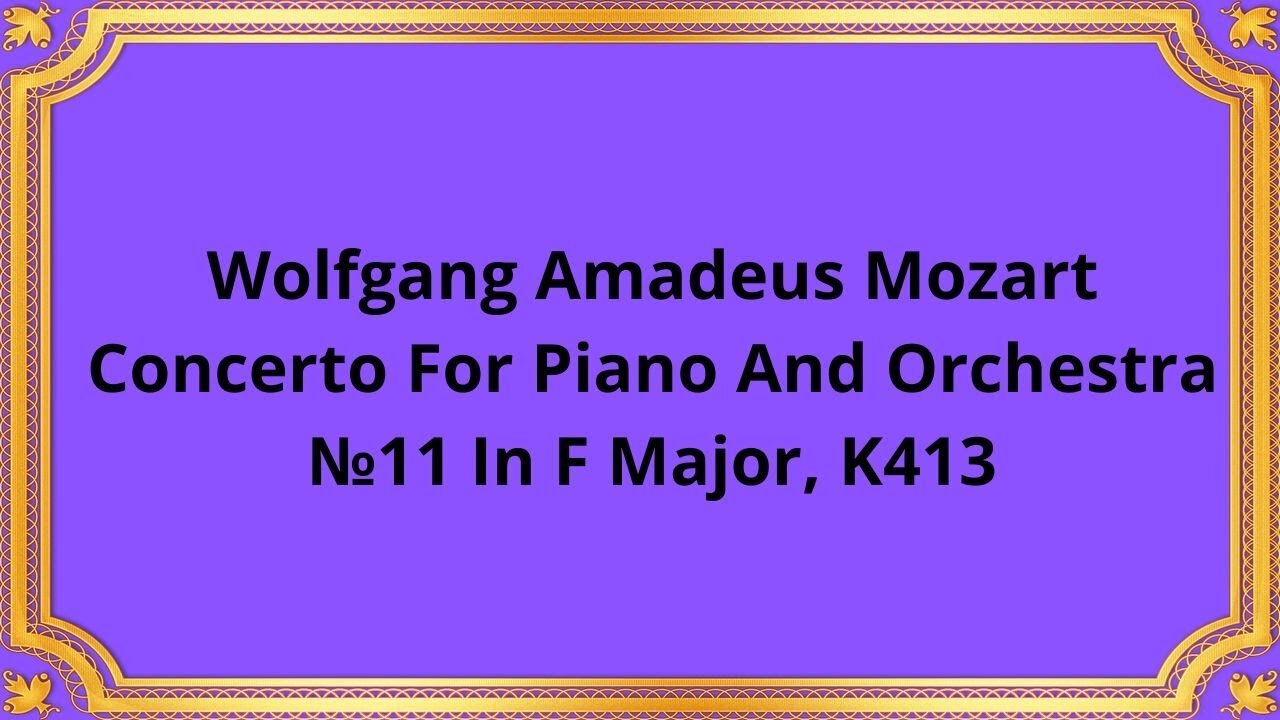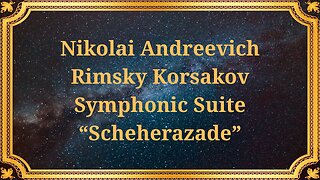Premium Only Content

Wolfgang Amadeus Mozart Concerto For Piano And Orchestra №11 In F Major, K413
#Mozart #Concerto #ClassicalMusic #Piano #Orchestra #FMajor #K413 #MusicalComposition
Publication date 1961
PRO MUSICA ORCHESTRA, ВЕНА
Ellen Gilberg — Conductor: Paul Walter
Wolfgang Amadeus Mozart, one of the most celebrated composers in history, left an indelible mark on the world of classical music. Among his vast repertoire, the Concerto for Piano and Orchestra No. 11 in F Major, K413, stands as a shining example of his musical genius.
Composed in 1782, the Concerto for Piano and Orchestra No. 11 in F Major, K413, emerged during Mozart's fruitful Vienna years. This period marked a shift in Mozart's musical style, showcasing his maturity as a composer. The concerto was written during a time when Mozart was experimenting with new forms and pushing the boundaries of traditional composition.
Mozart's Concerto for Piano and Orchestra No. 11 comprises three movements: Allegro, Larghetto, and Tempo di Menuetto. The opening Allegro movement introduces the listener to a lively and energetic theme, featuring a delicate interplay between the piano and the orchestra. The Larghetto movement follows, offering a contrasting mood with its serene and lyrical melodies. Finally, the Tempo di Menuetto movement concludes the concerto with a joyful and dance-like rhythm, showcasing Mozart's penchant for creating captivating musical dialogues.
Mozart's K413 concerto embraces a range of innovative elements that captivate both performers and listeners. Notably, the composition showcases Mozart's mastery of balancing intricate piano passages with the orchestral accompaniment. The interplay between the soloist and the orchestra is seamless, with each element complementing and enhancing the other. Additionally, Mozart's use of unexpected key changes and harmonic progressions adds depth and complexity to the concerto, elevating it beyond a mere showcase of technical virtuosity.
The Concerto for Piano and Orchestra No. 11 in F Major, K413, has continued to captivate audiences since its creation. Its timeless appeal lies in its ability to evoke a range of emotions, from joy and exuberance to melancholy and introspection. The concerto's enduring popularity has ensured its inclusion in the repertoire of countless pianists and orchestras worldwide, cementing its status as a beloved masterpiece of classical music.
Conclusion:
Wolfgang Amadeus Mozart's Concerto for Piano and Orchestra No. 11 in F Major, K413, is a testament to his brilliance as a composer. Its historical significance, innovative musical structure, and lasting impact have solidified its place as a cherished work in the realm of classical music. Through its captivating melodies and harmonies, this concerto continues to enchant audiences, ensuring Mozart's musical legacy lives on for generations to come.
You have the opportunity to support the channel:
https://destream.net/live/RadSiarAl/donate
https://www.buymeacoffee.com/6355radsiaral
-
 41:38
41:38
Classical music_Music Inspiration
1 month agoNikolai Andreevich Rimsky Korsakov Symphonic Suite “Scheherazade”
1721 -
 2:33:37
2:33:37
TimcastIRL
4 hours agoTrump Orders Review of Smithsonian For Being Woke & Out of Control | Timcast IRL
136K45 -
 3:09:10
3:09:10
Barry Cunningham
7 hours agoPRESIDENT TRUMP HAS TAKEN THE MONSTER AWAY FROM THE LEFT! HORROR STORIES WON'T WORK ANYMORE!
57.2K57 -
 1:29:55
1:29:55
WickedVirtue
1 hour agoLate Night Fortnite w/ Friends
13.3K -
 LIVE
LIVE
This is the Ray Gaming
2 hours ago $0.01 earnedCould you be? Would you be? Won't you be my RAYBOR? | Rumble Premium Creator
52 watching -
 1:46:52
1:46:52
JahBlessGames
3 hours ago🎉Come een' and come tru' - VIBES | MUSIC | GAMES
15.1K -
 38:47
38:47
MattMorseTV
5 hours ago $1.10 earned🔴Tulsi just CLEANED HOUSE.🔴
43.7K81 -
 LIVE
LIVE
Reolock
6 hours agoWoW Classic Hardcore | WE'RE BACK!!
192 watching -
 3:46:13
3:46:13
SynthTrax & DJ Cheezus Livestreams
8 hours agoShell Shock Live - The Scorched Earth Remake/Upgrade - 4pm PST / 7pm EST - RUMBLE GAMING
34.4K -
 2:56:57
2:56:57
Illyes Jr Gaming
4 hours agoBack to Black .....Ops 6 w/ ILLYESJRGAMING
21.3K1